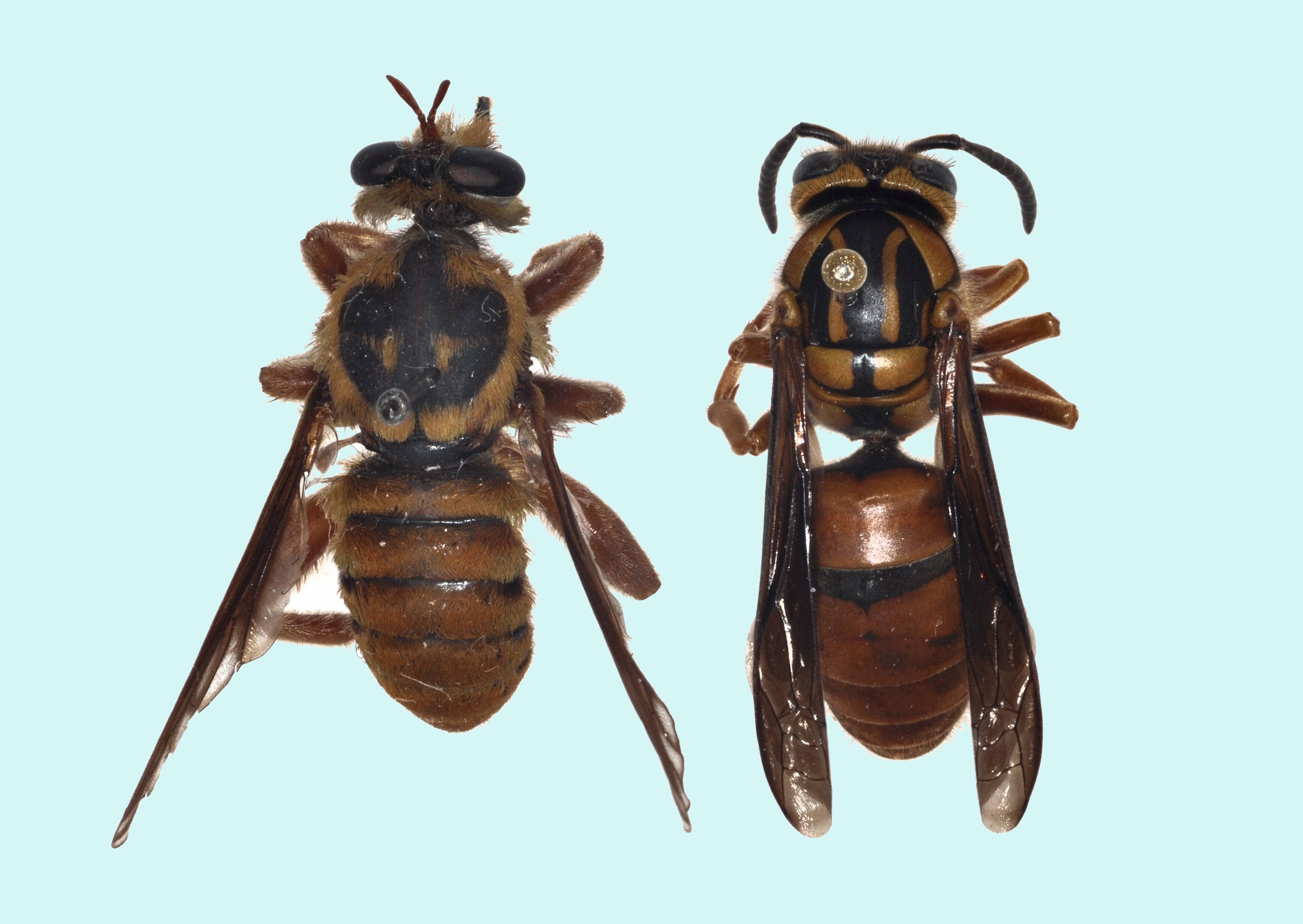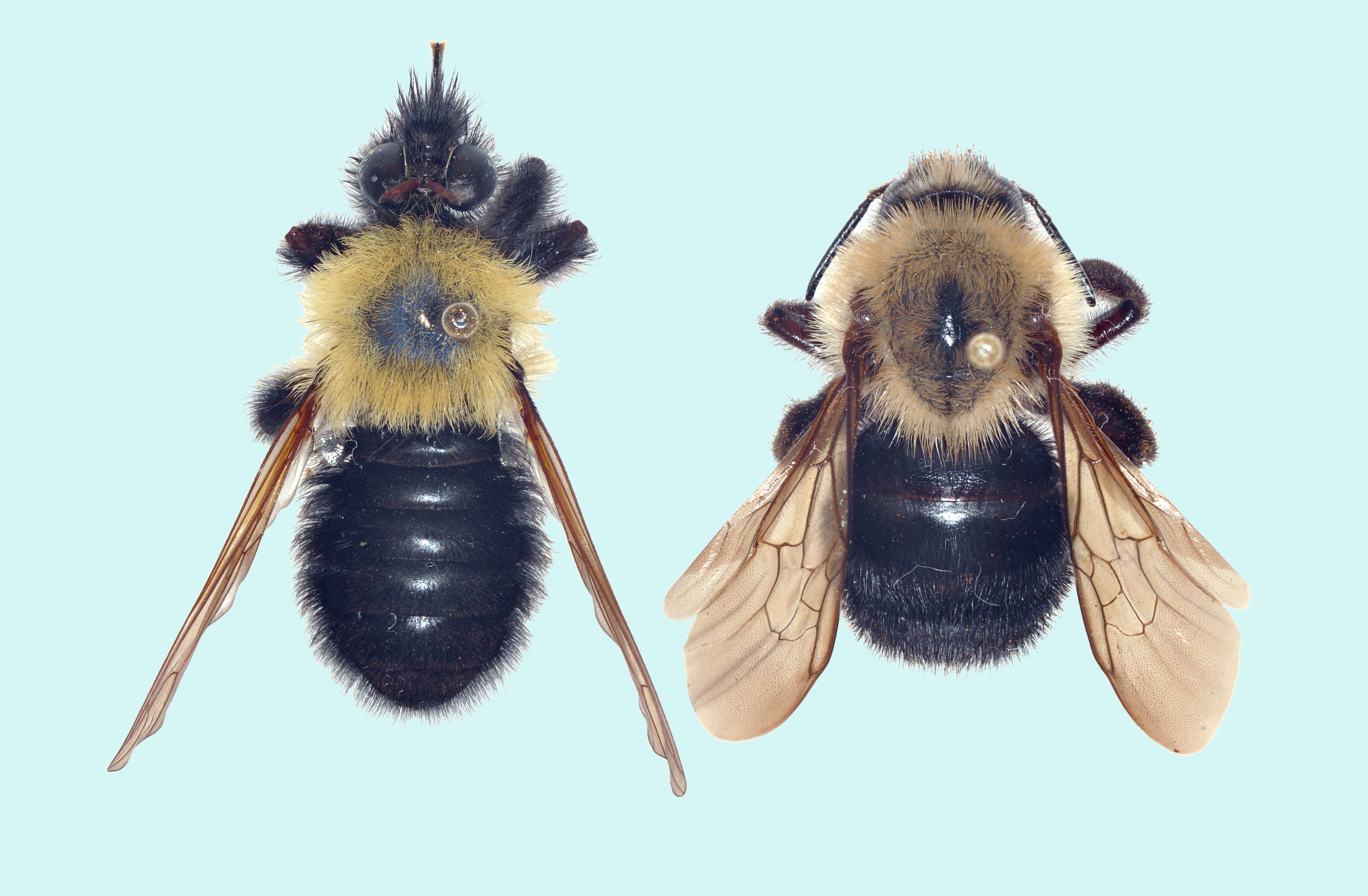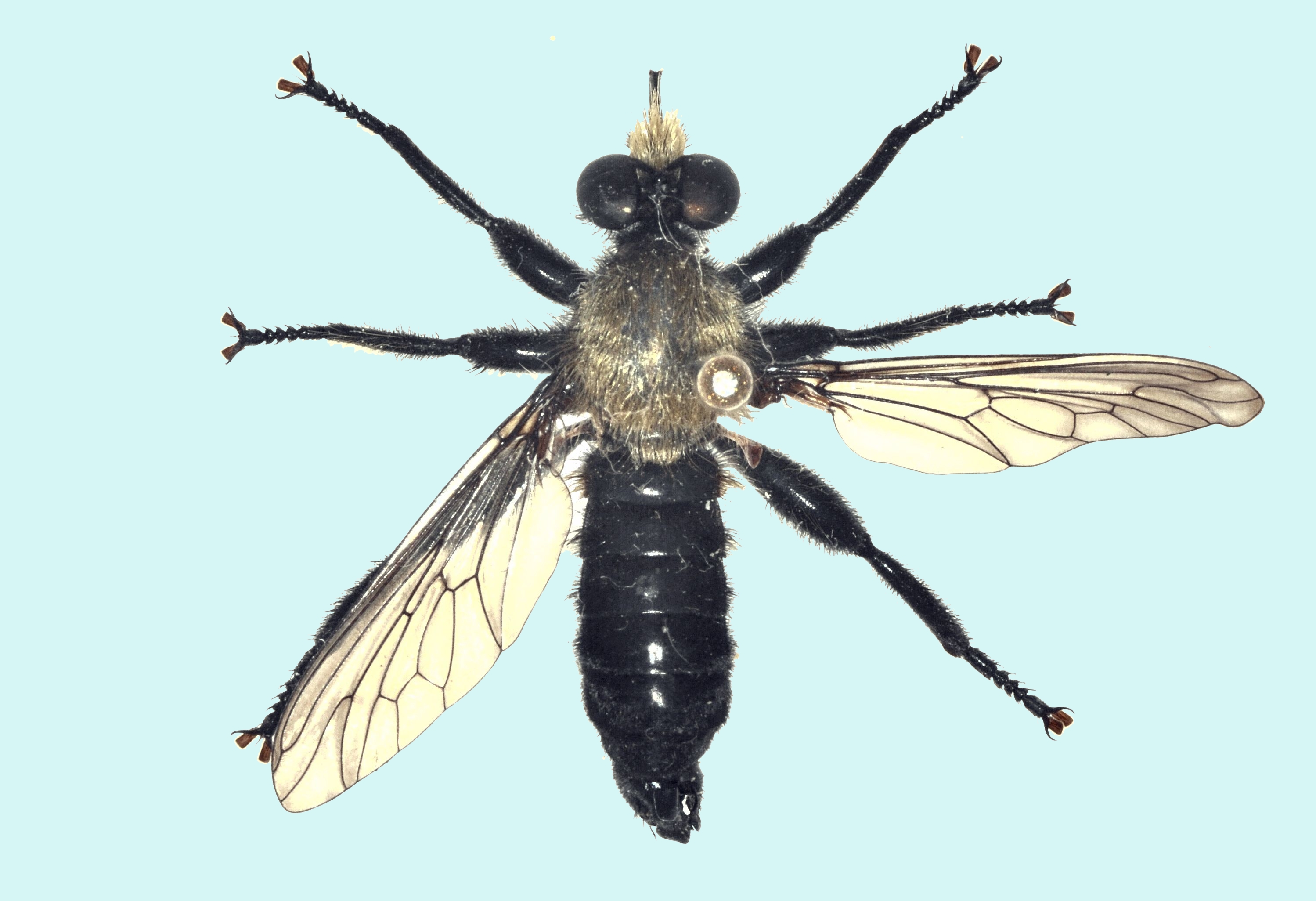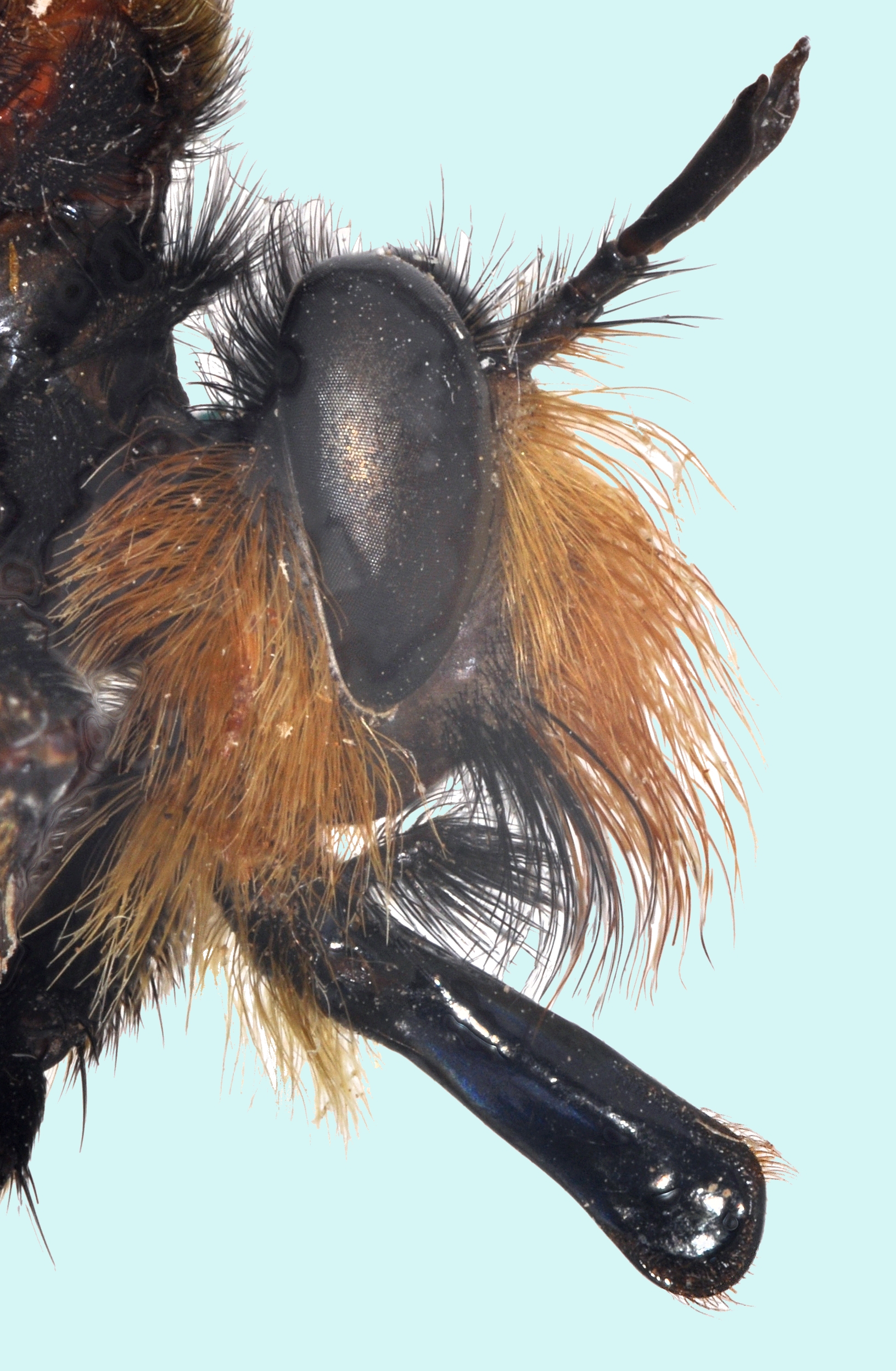Miscellaneous Updates and Some New Photos
August 10, 2014Since January I've made a lot of small changes in the setup of the Laphriini Pages that I've been meaning to document. Most are ongoing parts of more extensive changes that haven't yet been fully implemented. For example, I plan to fix any reference in the bibliography that has an on-line PDF or HTML version, to show a link to that version. With this, my bibliography will become a "one-stop-shop" for North American Laphriini literature. You will be able to look at the title, look at the annotation if there is one, or look at the original article or book, if it is on-line. I've added links for 59 of the 211 references. Many of the links are to page readers for large depositories like Biodiversity Heritage Library and HathiTrust. Others are to on-line PDFs. When I've added a link, I've also made it a point to annotate the reference, if it wasn't annotated already.
The references that now have links to a PDF or HTML version of the original article are:
Adisoemarto (1967)
Alexander (1940)
Andrews (1918)
Back (1904)
Baker and Fischer (1975)
Banks (1911)
Banks (1913)
Banks (1917)
Barnes, Lavers, and Raney (2007)
Bell (1921)
Beutenmüller (1904)
Brimley (1922)
Brimley (1938)
Britton (1920)
Bromley (1914)
Bromley (1924)
Bromley (1931a)
Bromley (1934a)
Bromley (1936)
Bromley (1942)
Bromley (1947)
Bromley (1950a)
Bromley (1950b)
Bromley (1950c)
Bromley (1951)
Brown (1929)
Canden, Suludere, Hasbenli, Cagiran, Lavigne, and Scarbrough (2004)
Cannings (2010)
Cannings (2012)
Cockerell (1927)
Cole and Lovett (1921)
Davis (1910)
Dennis and Lavigne (1976)
Evans (1970)
Greene (1918)
Greene (1910)
Greene (1911)
Harrington (1900)
Hine (1904)
Johnson (1895)
Johnson (1902)
Johnson (1910)
Johnson (1913)
Johnson (1925b)
Johnson (1927)
Knutson (1976)
Lavigne, Barr, and Stephens (2001)
Leonard (1928)
McAtee (1918)
McAtee and Banks (1920)
Nagatomi and Nagatomi (1989)
Quentin (1948)
Rohwer (1912)
Shelly (1979)
Snodgrass (1902)
Thompson (1891)
Walton (1910)
Woodruff (1960)
Young (1910)
As another example, I plan to fix most of the photographs so that you can click on them to get the original, usually much larger version. This linked photo will expand in a window up to its original size, if the photo is smaller than the screen resolution, and to fit your screen, if the photo is larger. In the last several years wide flat-screen monitors have become commonplace for desktop computers, and with this pop-up feature you can see more detail if you are using one of these monitors. Ditto if you are using a laptop (many people are now using a laptop as their principal computer). I've been adding these pop-ups as a matter of course in the blog for a while now. I've decided I will now be adding them in the main pages. The photos for the species treatments, however, are already large enough to be adequate, if not optimal, so these will be done last. So far I've added photo pop-up additions in the introductory pages for Laphriini and for Laphria s. str., as well as for miscellaneous new live shots in the species accounts.
Part and parcel with adding links to these enlarged photos, I will both re-take some photos (if possible), as well as add new ones. Once again, I've done some of this, but still have much to do.
In particular I added three completely new photographs to the introductory page for Laphria s. str. I've reproduced these here below, along with their captions. The photos here are less wide than their counterparts on the introductory page, so as to fit within the blog bounding box, if the blog is viewed at a resolution of 1024x768 (unfortunately at higher resolutions this reduction makes the photos look rather small). The backgrounds of the visible photos have also been tinted to match the background of the blog; the larger pop-ups, in contrast, have the original white background.
The first two photos are comparison shots of presumed mimics with potential models. The very first is a shot I've been wanting to take for a long time, showing the oddball Laphria saffrana along with its presumed model, a queen Vespula squamosa. The fly and wasp have much the same southeastern distribution, the same phenology, and fly somwhat similarly to each other. BTW, if this is mimicry it is just of the queen. The worker yellowjackets are much smaller than the queen and have a different color pattern.




As an aside, the reason Laphria like this look hunchbacked, at least in cropped head photos, is that when they die, the head is reflexed with respect to the thorax, much as is the case with fossil birds and small bipedal dinosaurs, and one would think at first for the same reason, namely the contraction of doral neck muscles. Because of this flexure, to get a side shot of the head with the eyes facing forward, as when the fly is airborne, the body has to be oriented at a considerable angle. Hence the hunchbacked look. However, in life, at rest, as for example on a horizontal surface of a fallen log, and more particularly in the smaller species when sitting head-down on the trunk of a tree, the head is also equally strongly reflexed. In fact, this reflexed position might be considered normal.
Much else has happened since January that will affect both the content and apprearance of these pages. I'll cover those developments in future posts.
As for new collecting finds or photographs, I don't have any, for a combination of reasons. First, it's been an extremely cool spring and summer, and overcast and wet, too. Although I've run my Malaise trap when I've been home my asilid catch has been miniscule. Even Laphria like hot, sunny days. Second, I haven't been home to run the trap as much this year as during the last two. That's because I haven't taken my vacation yet. A lot's been going on at work I didn't want to miss.


 Digg
Digg
 Facebook
Facebook
 StumbleUpon
StumbleUpon
 LinkedIn
LinkedIn
 Twitter
Twitter
 Email
Email